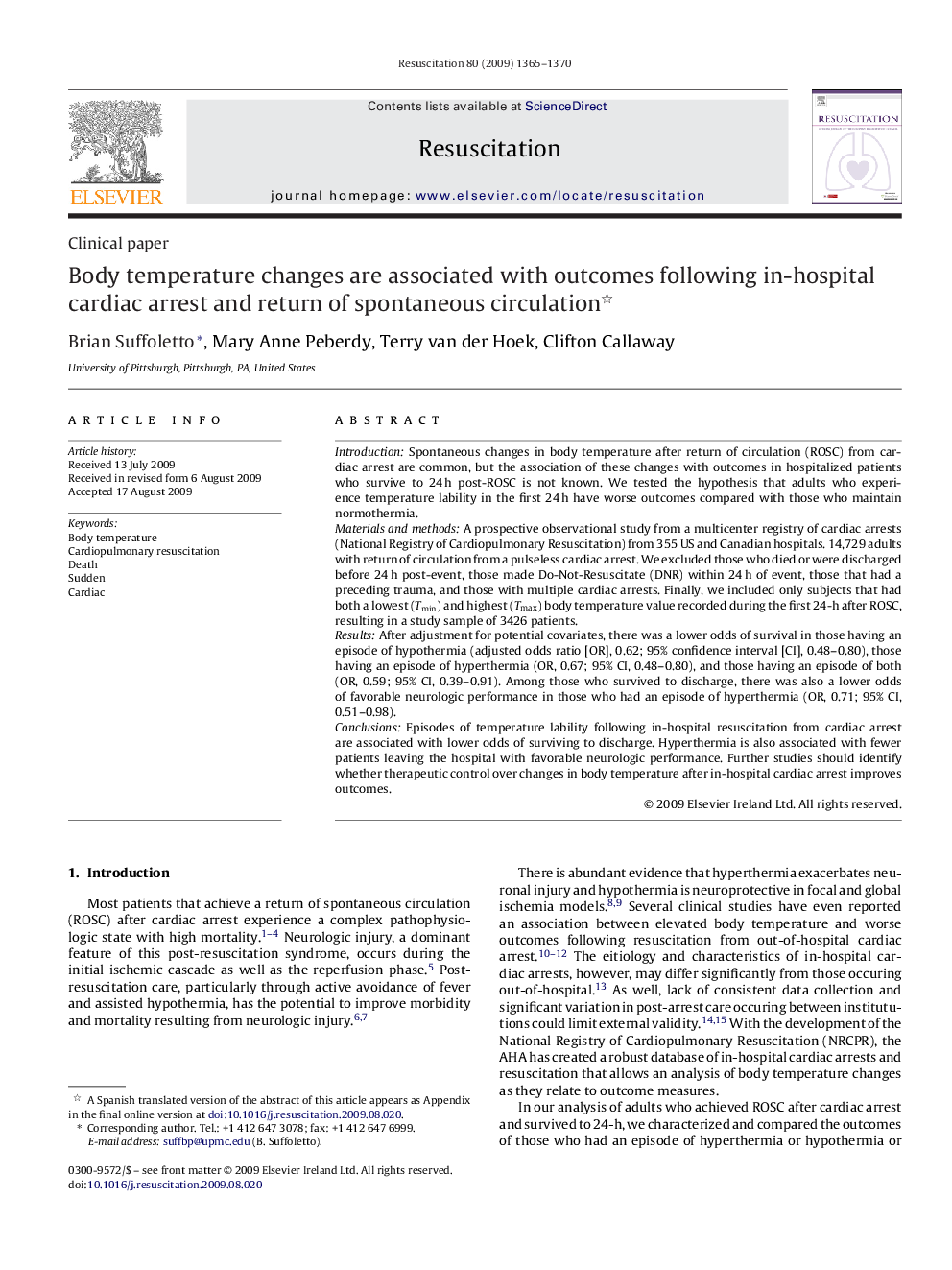| کد مقاله | کد نشریه | سال انتشار | مقاله انگلیسی | نسخه تمام متن |
|---|---|---|---|---|
| 3009374 | 1578999 | 2009 | 6 صفحه PDF | دانلود رایگان |

IntroductionSpontaneous changes in body temperature after return of circulation (ROSC) from cardiac arrest are common, but the association of these changes with outcomes in hospitalized patients who survive to 24 h post-ROSC is not known. We tested the hypothesis that adults who experience temperature lability in the first 24 h have worse outcomes compared with those who maintain normothermia.Materials and methodsA prospective observational study from a multicenter registry of cardiac arrests (National Registry of Cardiopulmonary Resuscitation) from 355 US and Canadian hospitals. 14,729 adults with return of circulation from a pulseless cardiac arrest. We excluded those who died or were discharged before 24 h post-event, those made Do-Not-Resuscitate (DNR) within 24 h of event, those that had a preceding trauma, and those with multiple cardiac arrests. Finally, we included only subjects that had both a lowest (Tmin) and highest (Tmax) body temperature value recorded during the first 24-h after ROSC, resulting in a study sample of 3426 patients.ResultsAfter adjustment for potential covariates, there was a lower odds of survival in those having an episode of hypothermia (adjusted odds ratio [OR], 0.62; 95% confidence interval [CI], 0.48–0.80), those having an episode of hyperthermia (OR, 0.67; 95% CI, 0.48–0.80), and those having an episode of both (OR, 0.59; 95% CI, 0.39–0.91). Among those who survived to discharge, there was also a lower odds of favorable neurologic performance in those who had an episode of hyperthermia (OR, 0.71; 95% CI, 0.51–0.98).ConclusionsEpisodes of temperature lability following in-hospital resuscitation from cardiac arrest are associated with lower odds of surviving to discharge. Hyperthermia is also associated with fewer patients leaving the hospital with favorable neurologic performance. Further studies should identify whether therapeutic control over changes in body temperature after in-hospital cardiac arrest improves outcomes.
Journal: Resuscitation - Volume 80, Issue 12, December 2009, Pages 1365–1370